#entelognathus
Text

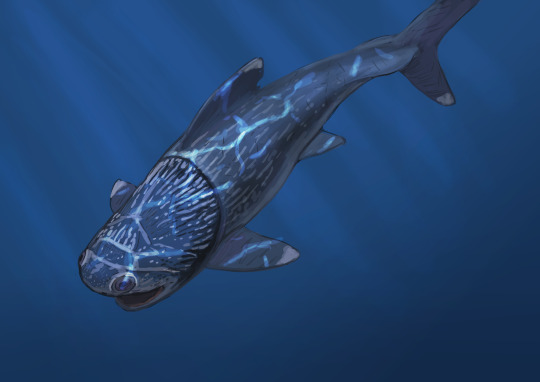

The amount of interesting research about placoderms in recent years gives me life.
They are such goobers.

Dunkleostes, Amazichthys, Alienacanthus and Entelognathus
3K notes
·
View notes
Note
Sometimes I see you on my dash doing a science and it makes me happy and do you have any shark facts pls? Sharks are so cool. Especially the weird deep sea sharks that always get ignored when ppl talk about great whites and such (no shame to great whites they are very lovable,)
Of course I have quite a lot!
Okay so we can start with the first shark ancestors, the spiny sharks! They lived in the Silurian, more than 400 million years ago. They looked pretty unique as each fin was actually a spine supporting the whole fin, and had already reacquired the cartilaginous skeleton that modern sharks have!

Nobu Tamura / CC BY-SA 4.0
They often had a bunch of little pairs of "finlets" (not real fins, but spines serving a similar purpose) between their actual fins! So spiky!
Then we come to the true sharks (and rays). Or, nearly. Turns out, there are two main groups of shark-like cartilaginous fish alive today. On the one hand the sharks and rays, and on the other hand the chimeras, majestic creatures often found in the deep sea!

Havforskingsinstituttet / CC BY-SA 4.0
Turns out however, the ancestors of chimeras were historically way more shark-like! And ranged between adorable and pretty weird, and more often than not both! Here's one of them: the sawblade shark, Helicoprion!

Entelognathus / CC BY-SA 4.0
And here's the anvil shark!
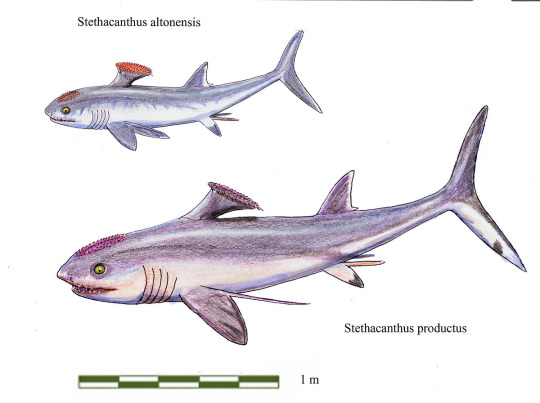
DiBgd / CC BY-SA 4.0
And the wtfshark, Squaloraja!
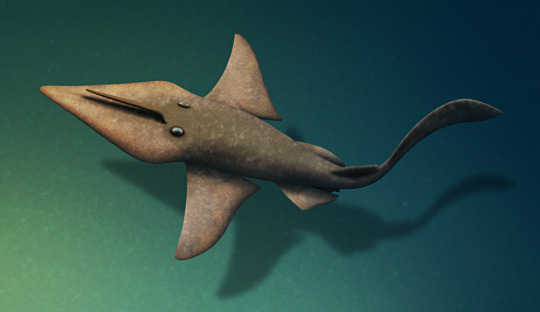
Nix Illustrations / I don't know the license but he's on Tumblr
And now we can move on to the actual sharks. And rays. And sawsharks. And sawfish. And sawskates. The design so good they had to invent it thrice.
Here's a sawfish (these ones are closer to rays!), heavily judging whoever took the photograph. Surprisingly, they're the largest of the bunch, reaching up to 7 meters - while sawsharks are barely a meter in length at best, and sawskates aren't alive anymore but could reach a respectable 4 meters! (although they were wider relative to their size, which has to count for something?)

Simon Fraser University - University Communications / CC BY 2.0
Now that we saw the saws, we can move on to actual sharks... wait what's that? An interruption by the coolest species of six-finned ray?
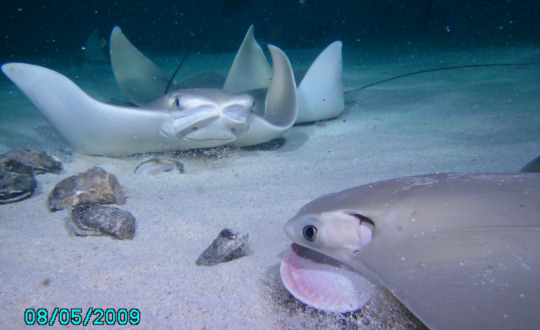
Robert Fisher, Virginia Sea Grant / CC BY-ND 2.0
Seems like it. Of course I had to mention my favourite cartilaginous fish in the bunch. Cownose rays (and their manta ray cousins) are the only vertebrates to have developed an entire new pair of fins - on their face, to help them grab stuff! Since fish paired fins are homologous to our limbs, it would be like having an extra pair of arms coming from our face!
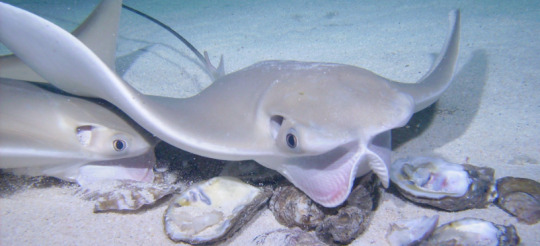
Robert Fisher, Virginia Sea Grant / CC BY-ND 2.0
Back to sharks now (finally)! And speaking of stuff it's rare to have six of, what about sixgill sharks?

No author information / Public domain
The most divergent group of true sharks alive today, the deep-sea creatures that we call frilled sharks are actually very derived, despite their prehistoric appearance! Ironically, their more ordinary-looking sixgill cousins, the cow sharks, are more representative of how sharks started off back in the days!
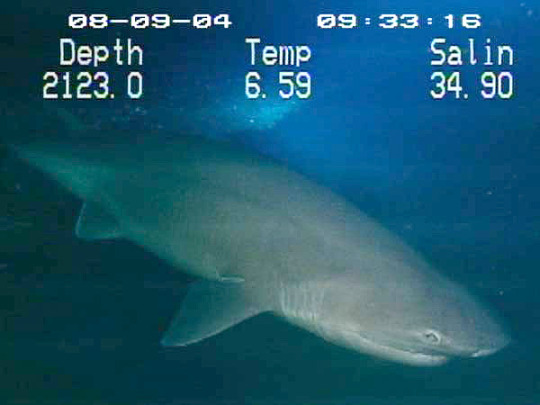
NOAA / Public domain
Still six gills because why not. Or even seven, because really, why not.
Next step on our shark list (and back to the regular five-gill pattern), the angelsharks! Or sand devils, because they really couldn't decide on these ones. Angels or devils, they're absolutely adorable pancakes.
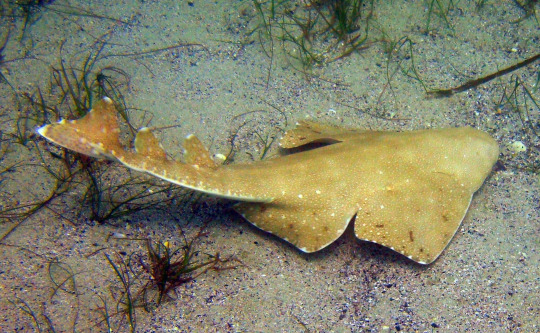
Nick Long / CC BY-SA 2.0
Now, we would still have five more orders of sharks to go, but these are the pretty well-known ones (great white shark, hammerhead shark, etc.) and this post is getting pretty big, so I'm happy to have presented cool unique ones already! Have a nice day, and don't forget - there are always more shark species to learn about!
152 notes
·
View notes
Text

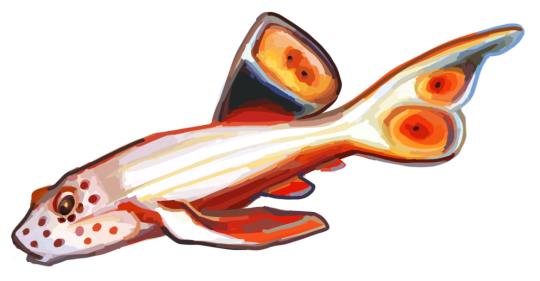

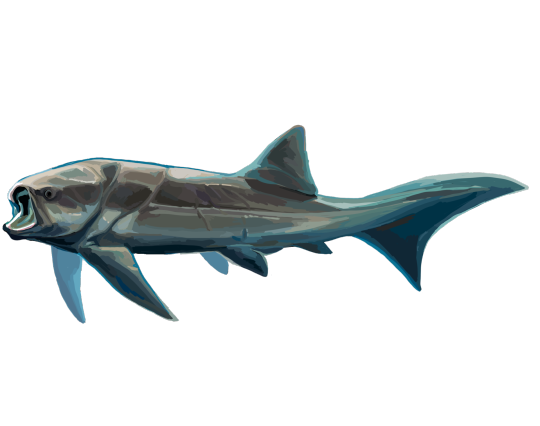
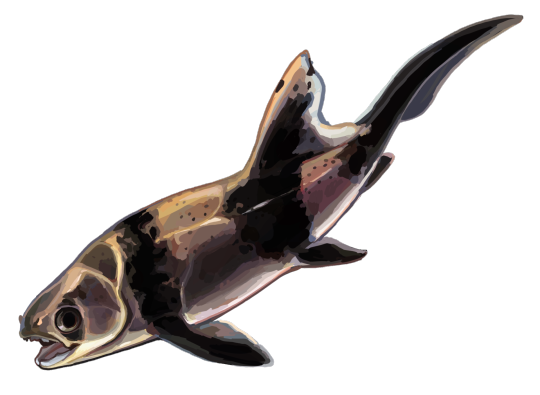
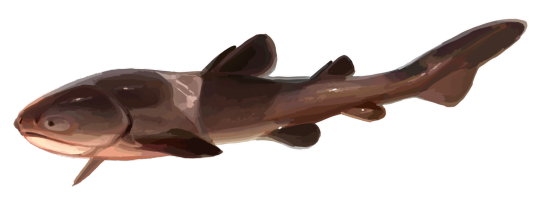
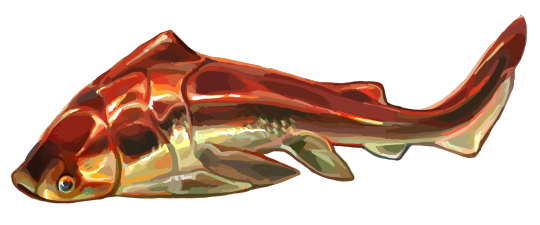


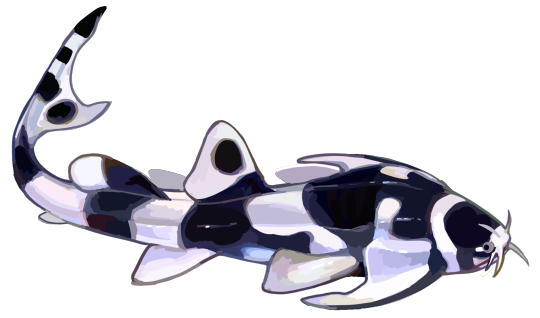
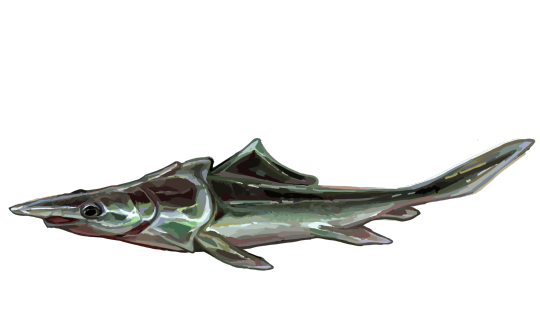
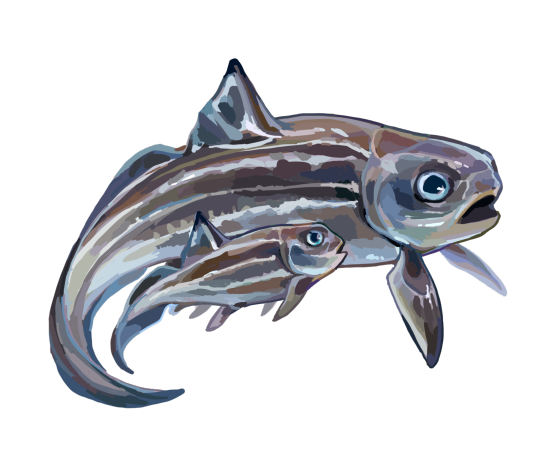
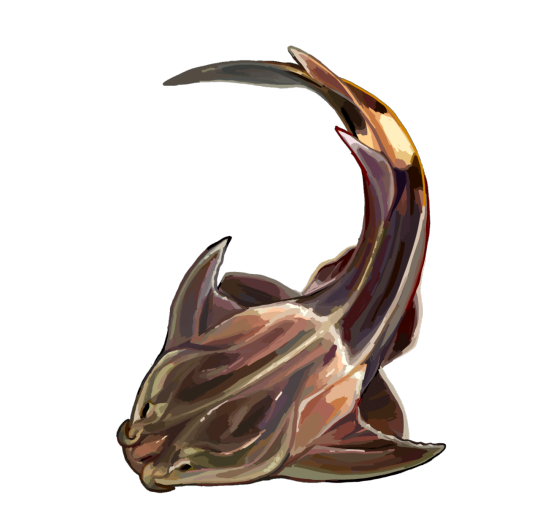

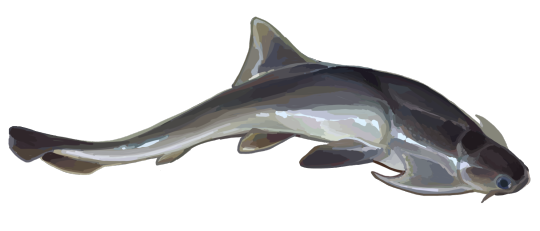
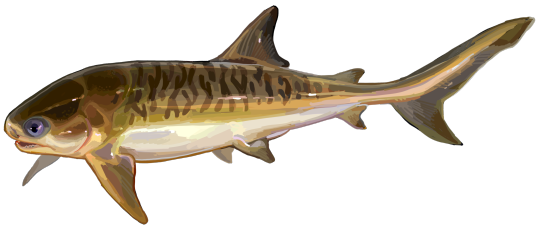
reconstructions of extinct placodermi by now-deleted user @/Entelognathus on wikipedia!
(in order: Dunkleosteus, Wufengshania, Kujdanowiaspis // Titanichthys, Coccosteus // Entelognathus, Groenlandaspis, Cartieraspis // Mcnamaraspis, Ailuracantha, Brindabellaspis // Materpiscis, Lunaspis // Bulongosteus, Dicksonosteus, Eastmanosteus)
#i miss my wife tails. i miss her a lot (placodermi)#uploads#fishposting#placoderm#prehistoric fish#paleo
82 notes
·
View notes
Text












Edestus is an extinct genus of eugeneodontid holocephalian fish which lived from the Bashkirian to Moscovian of the Carboniferous period some 313 to 307 million years ago. The first remains of edestus consisting of a fragmented tooth whorl is believed to have been recovered from Muskogee County, Oklahoma in the early 1850s. This specimen was formally described in 1856 by Joseph Leidy who used it to erected the genus Edestus and naming the type species is Edestus vorax. With the name Edestus being derived from the greek word edeste (to devour), in reference to the aberrant quality and size of the species' teeth. In 1855 Edward Hitchcock presented a tooth whorl found in Indiana to the American Association for the Advancement of Science meeting at Providence, Rhode Island. This specimen was loaned to famed British anatomist Richard Owen in 1861, who referred it to Edestus and suggested that it was a fin spine, this would start a trend of depicting the tooth whorl on various parts of the animal. This lasted until 1912 when Oliver Perry Hay described an associated pair of upper and lower tooth whorls found in a coal mine near Lehigh, Iowa. This lead to our current understaning that edestus only had single row of teeth occurred in the midline of each jaw, this also earned Edestus its nickname “the scissor tooth shark”. Today remains of edestus have been found across the United States, Great Britian, and Russia with 4 species being considered currently valid: E. vorax, E. minor, E. heinrichi, & E. triserratus with a 5th species Edestus newtoni being considered by some to be a species whilst others consider it to be its own genus Lestrodus. As with most cartilaginous fish, preserved skeletal material is rare, due to the cartilage of the skeleton having a poor potential for fossilization. Several specimens with the preserved cranial remains of Edestus have been recovered. And based on more complete fossils of its close relatives we can assume Edestus would have had a streamlined, torpedo-shaped body with triangular pectoral fins and could have reached up to 22ft (6.7m) in length making one of the largest marine predators to exist in the Paleozoic.
Art used can be found at the following links:
Edestus giganteus: DiBgd
https://www.deviantart.com/dibgd/art/Edestus-giganteus-837330734
Edestus heinrichi: Eviler_Shark204
https://www.reddit.com/r/Paleontology/comments/16kzdm0/edestus_heinrichi_by_me/
Edestus: MarioLanzas
https://www.deviantart.com/mariolanzas/art/Edestus-951867953
Edestus: Joschua Knüppe
https://twitter.com/JoschuaKnuppe/status/1355350654663979009/photo/1
Diving With Edestus: HodariNundu
https://www.deviantart.com/hodarinundu/art/Diving-with-Edestus-815657632
Edestus: mathorart
https://www.reddit.com/r/Paleoart/comments/15emkxm/edestus_art_by_me/
Edestus: Julio Lacerda
https://paleoart.tumblr.com/image/118136645479
Edestus: AlexROM
https://www.deviantart.com/aleksrom/art/Edestus-sp-845002740
Edestus: Entelognathus
https://en.m.wikipedia.org/wiki/File:Edestus_recon.png
Edestus Feeding: Joschua Knüppe
https://x.com/JoschuaKnuppe/status/1082091274663006208/photo/1
Edestus: Jaime Chirinos
https://sciencephotogallery.com/featured/edestus-giganteus-shark-jaime-chirinos.html?product=art-print
#pleistocene pride#pliestocene pride#paleozoic#shark#shark week#edestus#scissor#scissor tooth#scissor toothed#scissor tooth shark#scissor toothed shark#prehistoric#extinct#animal#animal facts#sea creatures#marine life#carboniferous
1 note
·
View note
Text
Life in the Silurian

(first row: Pteraspis, Qianodus, Cooksonia; second row: Entelognathus, Guiyu, Eurypterus; third row: Prototaxites, Pneumodesmus)
Art by:
Cooksonia, Pteraspis - Nobu Tamura
Qianodus - Heming Zhang
Eurypterus - Vladislav Egorov
Prototaxites - Mary Parrish
Pneumodesmus - Wikimedia
Entelognathus - Brian Choo
Guiyu - Gogosardina
It‘s the Silurian and our fish ancestors came up with a great invention: Jaws! That‘s right, we now have the ability to bite stuff.
Fish (in the broadest sense of the word) have been around since the Cambrian explosion. The first group that split off from the fish line were the Jawless fish that I talked about last week. They are of course still around during the Silurian (some of them are still around today). One of them was Pteraspis.
However, during the Silurian we see the rise of another group of fish: The jawed fish. It is believed that jaws evolved from the gills, which were supported by cartilaginous material (this is a material that is not as hard as bone but much stronger then muscles or other tissue. We still have it in many of our joints). Over time this cartilaginous gill support partially morphed into jaws.
Probably the first group of jawed fish were the Placoderms or “armored fish“ like Entelognathus. They got their name from the bony armor that covered their heads and leads to some pretty cool looking fossils. They were a very shot lived group, only lasting from the Silurian of the end of the following Devonian, but during that time span they became some of the biggest and most terrifying things to swim in the oceans. They really subscribed to the rock star lifestyle of “live fast, die young“. And don‘t worry, I‘ll talk about them more next week, during the Devonian, when it will be their time to shine, and they reached much bigger sizes. Right now, in the Silurian, they were still relatively small like pretty much all fish, maybe around a foot long.
The next group of jawed fish to split off from the family tree are the Cartilaginous fish (or Condrichthyes, if you want to be fancy). As the name suggest their skeleton ist mostly made out of cartilaginous material. Today they include sharks, rays and some other groups. Qianodus was one of the earliest members of this group.
Then we have the bony fish (Osteichytes) like Guiyu. The name again describes the skeleton and this time it is made from (big surprise) bones. Today the bony fish dominate our oceans. Think about any kind of fish. Unless you‘re picturing a shark right now, whatever you‘re thinking about is probably a bony fish. Bony fish will also eventually give rise to the tetrapods (that‘s us!), so they are our ancestors and if you want to be technically correct (the best kind of correct), you could even say that we are bony fish.
Going away from all the fish, many of the invertebrates also recovered after the mass extinction at the end of the Ordovician. Some of the most famous ones are the eurypterids, the sea scorpions, that I already mentioned in the last post. Their name-giver species Eurypterus lived during this time. Compared to some of the other gigantic eurypterids (some were bigger than a person), they were fairly unimpressive with sizes averaging around 20 cm, in rare cases measuring up to 60 cm. They were however the most common eurypterid by far, making up about 90 % of all the eurypterid fossils we have today.
While the Silurian oceans would have looked alien to us, the land looked possible even more bizarre. The plants were now colonizing the planet. At this point they had developed a vascular system (one of the earliest vascular plants is Cooksonia). This is basically the plant version of a blood stream and it allows the plants to distribute nutrients and therefore grow much taller. And by much taller I mean about 30 cm. These early plants formed miniature forests, which honestly sounds kinda cute. If you look at a forest today, you‘ll find big trees and maybe some small mushrooms growing in their shadows. Back then it was the opposite: The miniature forests of Cooksonia and mosses were dwarfed by giant fungi, like Prototaxites. Their almost tree-like structures grew up to 8 m tall and give any paleoart of the period an eerie, alien vibe.
But what personally creeps me out even more about this early world, is the thought of how silent it must have been. No flies buzzing. No crickets making sound. No birds chirping. No mice rustling through the undergrowth. Just silence. The only animals that had made it onto land by this time were some arthropods like the millipede Pneudesmus, whose name means “air breather“, because it was one of the very first animals that was able to do that. We have to wait a bit longer for the land to become busy enough for noise.
(Again, everything just summarized from wikipedia)
1 note
·
View note
Note
Loved your pterasus mashup. 👍🏼 Any chance you take requests? 😁 Like .. a shark, but built like a scorpion? 🤔
No, I don’t usually take requests but a scorpion shark is so compelling that I might give it a try. I used to watch really shitty shark monster mashup movies along the line of like sharkraptor vs octowolf lmaooo
SO! Here’s my basic idea before I get into it.


A entelognathus which isn’t really a shark but it’s armor and pointed tail make it a perfect match for an Indian red scorpion!
9 notes
·
View notes
Video
undefined
tumblr
The DEVOnian
Inspired by this post by @biologymemes
Image sources under the cut:
In order of appearance:
Global Paleogegraphy during the Late Devonian by Wayne Ranney (article: The Antler Orogeny and the First Suspect Terrane: Middle Devonian to Late Pennsylvanian: Ca. 400–300 Ma )
Drepanaspis by Nobu Tamura
Bothriolepis by Nobu Tamura
Dunkleosteus by Dmitry Bogdanov
Cladoselache by Nobu Tamura
Ischnacanthus by Nobu Tamura
Xenacanthus by Nobu Tamura
Astrastis by Stanton F. Fink (Apokryltaros)
Pteraspis by Stanton F. Fink (Apokryltaros)
Hemicyclaspis by Nobu Tamura
Actinolepis by Stanton F. Fink (Apokryltaros)
Materpiscis by Entelognathus
Lunaspis by Stanton F. Fink (Apokryltaros)
Heterosteus by Dmitry Bogdanov
Titanichthys by Dmitry Bogdanov
Doryaspis by Nobu Tamura
Coccosteus by Nobu Tamura
Tiaraspis by Stanton F. Fink (Apokryltaros)
Dipterus by Nobu Tamura
Eusthenopteron by Nobu Tamura
Panderichthys by Nobu Tamura
Tiktaalik by Zina Deretsky
Elginerpeton by Nobu Tamura
Acanthostega by Nobu Tamura
Ichthyostega by Nobu Tamura
147 notes
·
View notes
Note
Top 5 prehistoric creatures =D
This one took me a while to think of! I wanted to list something other than dinosaurs and Pleistocene mammals, so here’s my top favorite prehistoric creatures that existed before the Triassic!
1) Dunkleosteus

By Entelognathus - Own work, CC BY-SA 4.0, https://commons.wikimedia.org/w/index.php?curid=100958595
2) Inostrancevia

By Ghedoghedo - Own work, CC BY-SA 3.0, https://commons.wikimedia.org/w/index.php?curid=8527157
3) Diplocaulus

By Camelops - Own work, CC BY-SA 4.0, https://commons.wikimedia.org/w/index.php?curid=56961326
4) Cynognathus

By Ghedoghedo - Own work, CC BY-SA 3.0, https://commons.wikimedia.org/w/index.php?curid=11260941
5) Helicorprion

By Entelognathus - Own work, CC BY-SA 4.0, https://commons.wikimedia.org/w/index.php?curid=105935332
11 notes
·
View notes
Photo

Finally, it’s (sort of) done. Very, very simplified synapsid evolution. I started with basic eukaryotic cell, I didn’t even try to imagine what the LUCA was like. Probably some weird, virus-like thingy. I’m not sure I won’t tweak it a bit more, but for now, I consider it finished. I’m happy I managed to get it done now, as tomorrow I’m moving to a new address, and will be busy with cleaning, painting walls, more cleaning, and generally making the place hospitable, and won’t have time to paint or draw, so I’m glad I can at least upload this before disappearing for a while. I’ll also add this to my redbubble at some point.
So, the creatures are:
some generic cells, that weirdo that is Saccorhytus coronarius, a tunicate, Oikopleura dioica, because I was lazy, Pikaia, Haikouella, Haikouichthys, Pteraspis, Entelognathus, Guiyu oneiros, Tungsenia paradoxa, Tiniaru, Panderichthys, Tikataalik roseae, Acanthostega, Ichthyostega, Pederpes, Westlothiana, Echinerpeton, Pantelosaurus, Tetraceratops, Charassognathus, Dvinia, Prozostrodon, Adelobasileus, Hadrocodium, Teinolophos trusleri, Sinodelphys, Juramaia.
Now, Teinolophos (the monotreme) is known, of course, only form a jaw. It’s the oldest monotreme we have in the fossil record and can be a platypus relative, but can also be more basal than that. All we know for certain is: it had teeth as adult and didn’t have a beak. I had no idea how to restore it at first. All living monotremes are specialised weirdos. None have whiskers, for example. But, considering we don’t have anything that could be considered a generic monotreme, that begs the question: are whiskers therian thing, or mammalian thing, and extant monotreme lost them secondarily, because they just had to be wierd? Considering Teinolophos’s teeth, and the fact that it apparently had a rather strong bite (though how we know this is a mystery to me) it’s rather certain that it had a different lifestyle than that of any living monotremes. So, with that in mind, I decided to make it unlike any extant monotreme. And to give it whiskers, because I’m adventurous like that…
Though honestly, anything between Pantelosaurus and Sinodelphys/ Juramaia is known mostly from skulls (or fragments of skulls), so they’re all speculative to some degree. Also, I don’t think I need to say this, but none of them are drawn to scale.
And, while we’re on topic of I don’t think I need to mention it, but I will anyway:
The creatures I chose to paint here aren’t necessarily ancestors of anything that is alive today (and hell, the fish part of this painting definitely shows some non-ancestors (look at me, inventing words…), because we have the Zachełmie tracks that were left by something very much tetrapod-like, with four walking limbs, and tail and body held off the ground, and they predate Tiktaalik for about 12 million years, and Panderichthys by 10 million. I wonder if we’ll ever discover what left those tracks. That would be awesome! If only the fossil record wasn’t so patchy…
#synapsida#mammalia#palaeoblr#palaeoart#paleoart#synapsids#evolution#palaeontology#paleontology#evolution of mammals#my art
338 notes
·
View notes
Text
Fernand Khnopff on ichthyology, Hypnos Thanatos on Gnathostomata, Osteichthyes, Guiyu oneiros 鬼魚 guǐyú "ghost fish" from Greek ὄνειρος “dream”
Fernand #Khnopff on ichthyology, Hypnos Thanatos on Gnathostomata, Osteichthyes, Guiyu oneiros 鬼魚 guǐyú "ghost fish" from Greek ὄνειρος “dream”
http://blog.naver.com/artnouveau19/221256149236
Fernand Khnopff and ichthyology, Hypnos and Thanatos on Gnathostomata γνάθος (“gnathos") "jaw" + στόμα(stoma) "mouth", Osteichthyes bony fish, Guiyu oneiros 鬼魚 guǐyú "ghost fish" and the specific name oneiros is from Greek ὄνειρος “dream", The Tsinghua-Lancet Commission on Healthy Cities in China
Gnathostomata /ˌneɪθoʊstoʊˈmɑːtə/ are the jawed vertebrates. The term derives from Greek: γνάθος (gnathos) "jaw" + στόμα(stoma) "mouth". Gnathostome diversity comprises roughly 60,000 species, which accounts for 99% of all living vertebrates. In addition to opposing jaws, living gnathostomes have teeth, paired appendages, and a horizontal semicircular canal of the inner ear, along with physiological and cellular anatomical characters such as the myelin sheathes of neurons. Another is an adaptive immune system that uses V(D)J recombination to create antigen recognition sites, rather than using genetic recombination in the variable lymphocyte receptor gene.[1]
It is now assumed that Gnathostomata evolved from ancestors that already possessed a pair of both pectoral and pelvic fins.[2] In addition to this, some placoderms were shown to have a third pair of paired appendages, that in males had been modified to claspers and basal plates in females, a pattern not seen in any other vertebrate group.[3]
The Osteostraci are generally considered the sister taxon of Gnathostomata.[4][5][6]
It is believed that the jaws evolved from anterior gill support arches that had acquired a new role, being modified to pump water over the gills by opening and closing the mouth more effectively – the buccal pump mechanism. The mouth could then grow bigger and wider, making it possible to capture larger prey. This close and open mechanism would, with time, become stronger and tougher, being transformed into real jaws.
Newer research suggests that a branch of Placoderms was most likely the ancestor of present-day gnathostomes. A 419-million-year-old fossil of a placoderm named Entelognathus had a bony skeleton and anatomical details associated with cartilaginous and bony fish, demonstrating that the absence of a bony skeleton in Chondrichthyes is a derived trait.[7] The fossil findings of primitive bony fishes such as Guiyu oneiros and Psarolepis, which lived contemporaneously with Entelognathus and had pelvic girdles more in common with placoderms than with other bony fish, show that it was a relative rather than a direct ancestor of the extant gnathostomes.[8] It also indicates that spiny sharks and Chondrichthyes represent a single sister group to the bony fishes.[9]Fossils findings of juvenile placoderms, which had true teeth that grew on the surface of the jawbone and had no roots, making it impossible to replace or regrow as they broke or wore down as they grew older, proves the common ancestor of all gnathostomes had teeth and place the origin of teeth along with, or soon after, the evolution of jaws.[10][11]
Late Ordovician-aged microfossils of what have been identified as scales of either acanthodians[12] or "shark-like fishes",[13] may mark Gnathostomata's first appearance in the fossil record. Undeniably unambiguous gnathostome fossils, mostly of primitive acanthodians, begin appearing by the early Silurian, and become abundant by the start of the Devonian.
https://en.wikipedia.org/wiki/Gnathostomata
Osteichthyes /ˌɒstiːˈɪkθi.iːz/, popularly referred to as the bony fish, is a diverse taxonomic group of fish that have skeletons primarily composed of bone tissue, as opposed to cartilage. The vast majority of fish are members of Osteichthyes, which is an extremely diverse and abundant group consisting of 45 orders, and over 435 families and 28,000 species.[1] It is the largest class of vertebrates in existence today. The group Osteichthyes is divided into the ray-finned fish (Actinopterygii) and lobe-finned fish (Sarcopterygii). The oldest known fossils of bony fish are about 420 million years ago, which are also transitional fossils, showing a tooth pattern that is in between the tooth rows of sharks and bony fishes.[2]
Osteichthyes can be compared to Euteleostomi. In paleontology, the terms are synonymous. In ichthyology, the difference is that Euteleostomi presents a cladistic view which includes the terrestrial tetrapods that evolved from lobe-finned fish, whereas on a traditional view, Osteichthyes includes only fishes and is therefore paraphyletic. However, recently published phylogenetic trees treat the Osteichthyes as a clade.
Characteristics
Bony fish are characterized by a relatively stable pattern of cranial bones, rooted, medial insertion of mandibular muscle in the lower jaw. The head and pectoral girdles are covered with large dermal bones. The eyeball is supported by a sclerotic ring of four small bones, but this characteristic has been lost or modified in many modern species. The labyrinth in the inner earcontains large otoliths. The braincase, or neurocranium, is frequently divided into anterior and posterior sections divided by a fissure.
Early bony fish had simple lungs (a pouch on either side of the esophagus) which helped them breathe in low-oxygen water. In many bony fish these have evolved into swim bladders, which help the body create a neutral balance between sinking and floating. (The lungs of amphibians, reptiles, birds, and mammals were inherited from their bony fish ancestors.)[10][11] [12] They do not have fin spines, but instead support the fin with lepidotrichia (bone fin rays). They also have an operculum, which helps them breathe without having to swim.
Bony fish have no placoid scales. Mucus glands coat the body. Most have smooth and overlapping ganoid, cycloid or ctenoidscales.
Guiyu oneiros, the earliest known bony fish, lived during the Late Silurian, 419 million years ago).[4][5] It has the combination of both ray-finned and lobe-finned features, although analysis of the totality of its features place it closer to lobe-finned fish.
https://en.wikipedia.org/wiki/Osteichthyes
Guiyu oneiros is the earliest articulated bony fish discovered. The generic name Guiyu is a transliteration of the Mandarin 鬼魚 guǐyú "ghost fish" and the specific name oneiros is from Greek ὄνειρος "dream". Fossils of Guiyu have been found in what is now Qujing, Yunnan, China, in a late Silurian marine strata, about 419 million years old. Guiyu remains have been found articulated, missing only the caudal fin. The living fish is estimated to have been 33 cm long.[1][2]
Guiyu was described by Chinese palaeontologist Min Zhu and others in 2009, based on a near-complete articulated specimen. It was described as a basal lobe-finned fish with anatomical features of both ray-finned and lobe-finned fishes, although, analysis of the totality of its features place it closer to the class Sarcopterygii (lobe-finned fishes).[3] Guiyu sheds light on the early diversification of bony fishes. This clade, the osteichthyans, splits in two clades: the lobe-finned and the ray-finned (Actinopterygii) fishes. According to new data from Guiyu, this split occurred no later than 419 million years ago, during the early Devonian period. Guiyu had spine-bearing pectoral girdle, a feature which can be found in primitive gnathostome vertebrates. Other early bony-fish with remarkable features include Andreolepis, Lophosteus, Psarolepis, Ligulalepis and Dialipina.
Guiyu is part of the Xiaoxiang fauna which is rich in fossils representing a marine ecosystem. Found in the late Ludlow-aged Kuanti Formation, the remains were dated using conodonts as index fossils. The Xiaoxiang fauna also includes galeaspids, placoderms and acanthodians.
https://en.wikipedia.org/wiki/Guiyu_oneiros
The LancetVerified account @TheLancet
More
''By 2030, China is estimated to have an urban population in excess of 1 billion people, spread across 221 cities of more than 1 million people.'' Lancet editors introduce new commission on #HealthyCities in #China @Tsinghua_Uni
The Tsinghua-Lancet Commission on Healthy Cities in China: unlocking the power of cities for a healthy China
Published: April 17, 2018
Executive Summary
Increasingly, people leave the countryside to pursue better opportunities in cities. Nowhere has urbanisation been more rapid and pronounced than in China. This Lancet Commission, led by Tsinghua University in Beijing, examines the particular challenges and opportunities for health in China’s cities, with regard to health risks, health promotion, environmental health, and health-care delivery. For cities to be active participants in China’s aspiration as an ecocivilisation, there needs to be increased participation in health-related activities by stakeholders, with fuller integration of health into all civic policies. From this dialogue should come shared goals that are assessed regularly, and research on interventions to improve health for people who live in cities.
Comment
Healthy cities: key to a healthy future in China
William Summerskill, Helena Hui Wang, Richard Horton
The Lancet
Full-Text HTMLPDF
Commission
The Tsinghua–Lancet Commission on Healthy Cities in China: unlocking the power of cities for a healthy China
Jun Yang, José G Siri, Justin V Remais, Qu Cheng, Han Zhang, Karen K Y Chan, Zhe Sun, Yuanyuan Zhao, Na Cong, Xueyan Li, Wei Zhang, Yuqi Bai, Jun Bi, Wenjia Cai, Emily Y Y Chan, Wanqing Chen, Weicheng Fan, Hua Fu, Jianqing He, Hong Huang, John S Ji, Peng Jia, Xiaopeng Jiang, Mei-Po Kwan, Tianhong Li, Xiguang Li, Song Liang, Xiaofeng Liang, Lu Liang, Qiyong Liu, Yongmei Lu, Yong Luo, Xiulian Ma, Bernhard Schwartländer, Zhiyong Shen, Peijun Shi, Jing Su, Tinghai Wu, Changhong Yang, Yongyuan Yin, Qiang Zhang, Yinping Zhang, Yong Zhang, Bing Xu, Peng Gong
The Lancet
Published: April 17, 2018
Full-Text HTMLPDF
http://www.thelancet.com/commissions/healthy-cities-in-China?utm_campaign=tlwchinacities18&utm_content=69882427&utm_medium=social&utm_source=facebook
EU Food Health @SciFoodHealth Feb 16
FOOD 2030 report highlights successful EU research & innovation outcomes on Food and Nutrition Security which will play a crucial role in future-proofing our food systems & achieving #FOOD2030EU objectives. #FoodInnovation http://www.fit4food2030.eu/news/
https://twitter.com/SciFoodHealth/status/964431428325752832
EU Maritime & FishVerified account @EU_MARE Apr 17
More
Scientific data are paramount to understand #OurOcean. The European Marine Observation & Data Netwrok brings together over 150 orgs to collect & make accessible marine data. Learn more about @EMODnet at http://europa.eu/!UV66dC & explore the data portals at http://www.emodnet.eu
https://twitter.com/EU_MARE/status/986220306112110593
https://ec.europa.eu/maritimeaffairs/policy/marine_knowledge_2020_en
0 notes
Text


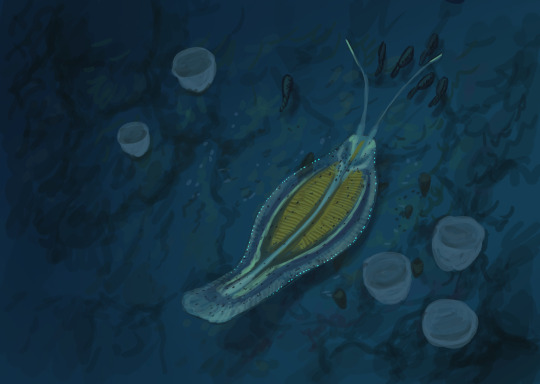
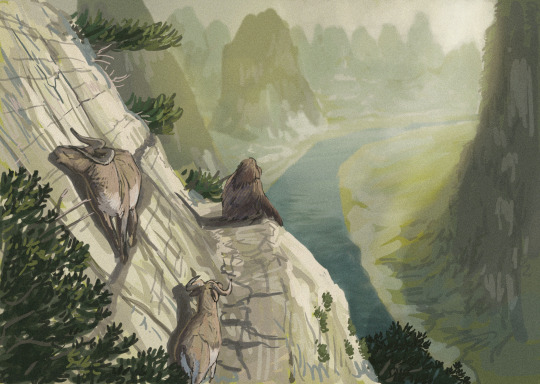
Results from the #paleostream
Entelognathus, Stenokranio, Timorebestia and Megalovis (with one big ape as well).
#sciart#paleoart#paleostream#palaeoblr#fish#placoderm#amphibian#stenokranio#pleistocene#goat#sketch#temnospondyl#arrow worm#gigantopithecus
1K notes
·
View notes
Photo
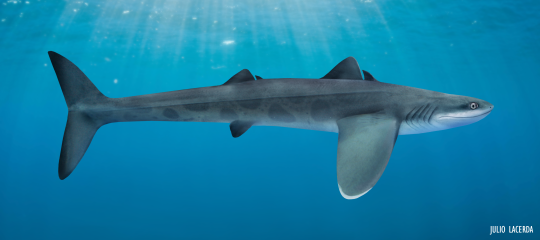
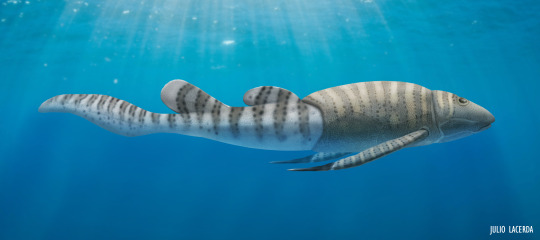

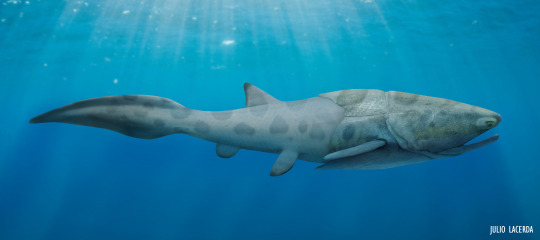
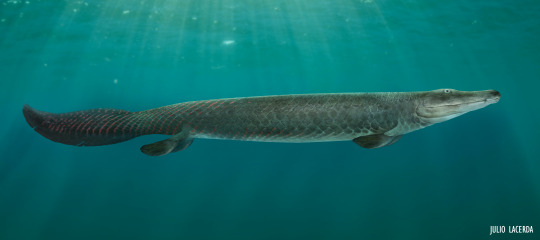

A Collection of Early Fishes;
Cladosechale, Bothriolepis, Doryaspis, Entelognathus, Tiktaalik and Materpiscis - for the article at Earth Archives.
#cladosechale#bothriolepis#doryaspis#entelognathus#tiktaalik#materpiscis#fish#devonian#silurian#extinct#prehistoric#animal#ocean#paleocene#my art#artwork#illustration
2K notes
·
View notes
Photo

yoyoyo! not very often does this rascal get da chance to covah somethin that is mo o less a current event! Well today must be Not Very Often then! Above is a rapscallion known as entelognathus primordialis. His name translate to Primordial Complete Jaw and he is so impress' because he is the first known fish/animal/organism to have a (somewhat [lol]) recognizable face. Befo him there were just feesh and shit with eyes and noses but they looked alien yo.
Their jaw is also pretti importante! It was fully formed and honestly somewhat resembles many many organisms today (including humans). Without this link in da evolutionary chain, we may all end up being ugly like eels and hagfishes (REAL ugly, not e'en tryna front)
Anyways, Entelognathus was a placoderm. Placoderms were the armored fishes that lived mainly during the Devonian. In case you have forgotten, Dunkleosteus (huge rascal) was a placoderm!
check out day strong, defined, masculine jaw! ^ I wondah who he got dat from...? hmm.??
#entelognathus primordialis#entelognathus#placoderms#placoderm#devonian#jaw#dunkleosteus#prehistoric fish#fish#fossils#prehistoric sharks
11 notes
·
View notes
Text
Incidents and Reflections Episode 3 - 09/26/2013
Incidents and Reflections - 09/26/2013 by Incidentsandreflections on Mixcloud
Article links
Eagle predation on sika deer (The Thoughtful Animal coverage, Not Exactly Rocket Science on bird of prey killing styles, Not Exactly Rocket Science on hypothesized dromaeosaurid killing style, Tetrapod Zoology on macropredation in eagles*) [05:29]
Enhanced Geothermal Systems in Australia (News article) [23:54]
All Your Yesterdays (Download link) [29:54]
Project Crynosaurs (Blog) [38:51]
Exoplanets (Open Exoplanet Catalogue) [43:41]
New "placoderm" fish Entelognathus and its implications for jawed vertebrate evolution (Nature News and Comment coverage) [51:03]
Song links
Silurian - Brighter Lights, Thicker Glasses [00:00]
I am a Paleontologist - They Might Be Giants [56:09]
*Tetrapod Zoology has changed its blogging platform a couple times over the years. Its current incarnation is at Scientific American.
Addendum: Failed to clarify that musk deer are not true deer.
#Science#WMUC#Incidents and Reflections#Eagles#Entelognathus#Paleontology#Astronomy#Exoplanets#Enhanced Geothermal Systems#Dinosaurs#Birds#Fish#Evolution#All Yesterdays#Project Crynosaurs#All Your Yesterdays#Raptors#Predators#Paleoart
0 notes